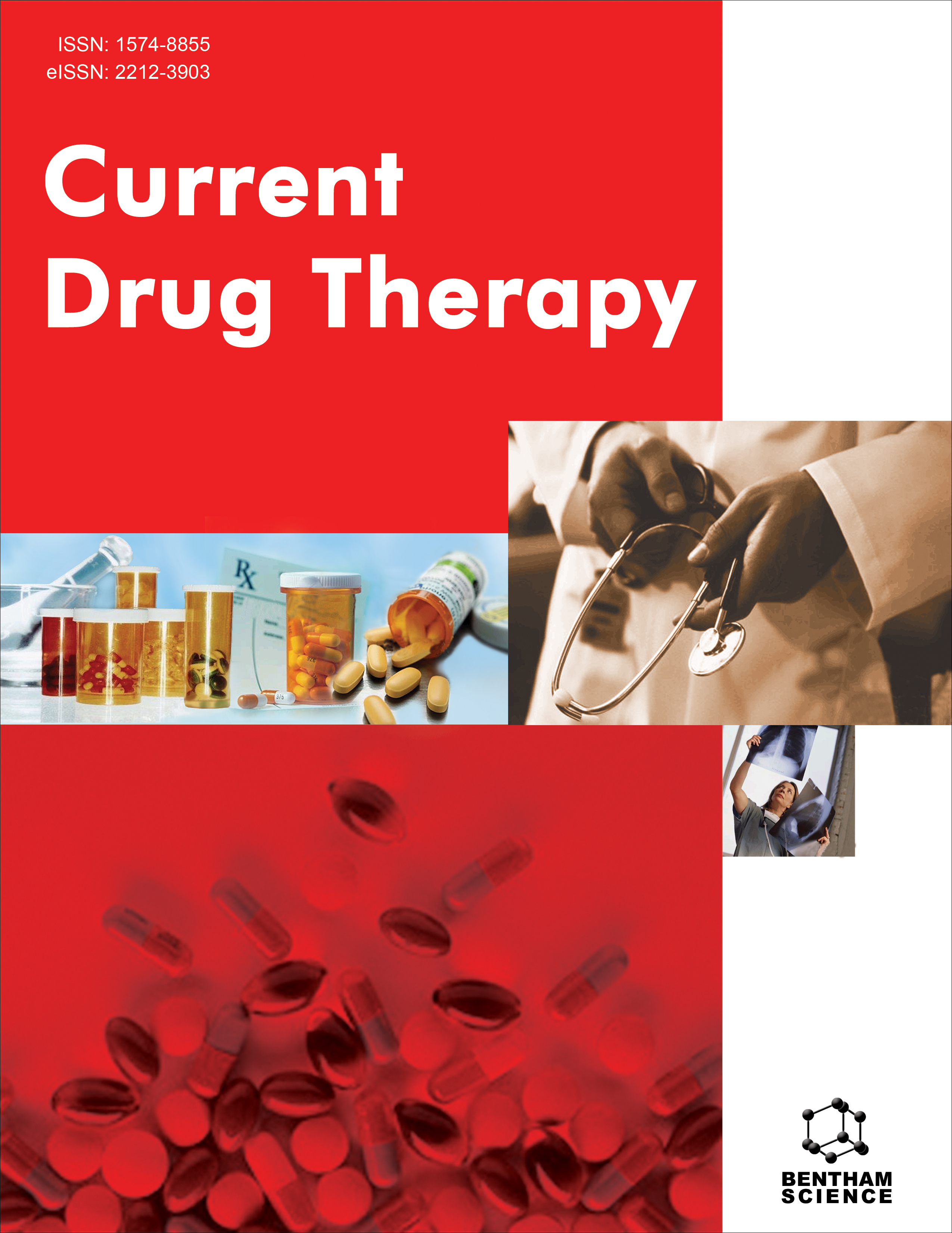- Home
- A-Z Publications
- Current Drug Therapy
- Previous Issues
- Volume 13, Issue 2, 2018
Current Drug Therapy - Volume 13, Issue 2, 2018
Volume 13, Issue 2, 2018
-
-
Treatment of Atopic Dermatitis: Current Status and Future Prospects
More LessAuthors: Kusha Sharma, Bharti Sapra and Neena BediBackground: Atopic dermatitis is a common chronic disease with a genetic background known as atopic syndrome characterised by pruritus and cutaneous inflammation. This review provides conventional and modified approaches for the treatment of atopic dermatitis treatment. Objective: The objective of this review is to provide an overview of the current and upcoming therapies along with novel approaches to improve th Read More
-
-
-
Inhibition of IL-2 Production by Novel Small Molecules Using Building Blocks from Reduced Chalcones and a Substituted Proline
More LessBackground: Immunosuppressants are a class of drugs that can inhibit the immune response, mainly through the inhibition of IL-2 production, among other mechanisms. The most studied representatives of this class of therapeutic agents are Cyclosporin- A, FK506, and Rapamycin. Due to the structural complexity of these molecules, their chemical synthesis has been difficult and expensive. Objective: To synthesize novel s Read More
-
-
-
Enhancement of Solubility of Lutein by Solid Dispersion Technique and Development of its Stable Orodispersible Film Formulation
More LessAuthors: Harshal A. Pawar and Pramila R. ShindeBackground: Orodispersible film (ODF) is a novel drug delivery system and most widely used dosage form because of its convenience in terms of self-administration, compactness, and ease in manufacturing. Lutein (Carotenoid) is an antioxidant, belongs to class II (High permeability and Low solubility) under BCS classification. To enhance the solubility, a solid dispersion of Lutein was prepared and then it has been successfully Read More
-
-
-
Molecular Modeling of Benzimidazole Derivatives: A Promising Series of GluN2B Selective NMDA Receptor Antagonists
More LessAuthors: Marcos V. Santana, Helena Carla Castro and Paula Alvarez AbreuBackground: The N-methyl-D-aspartate receptors (NMDAR) are extremely important ionotropic glutamate receptors in the central nervous system. These receptors are involved in different pathological conditions, such as Parkinson's, Alzheimer's and Huntington's, and also in neuronal death associated with trauma and stroke. Since the discovery of ifenprodil, many efforts have been made to develop subunit specific NMDAR a Read More
-
-
-
High Throughput Screening Based Highly Potent Sulfonyl-benzamide Anti-diabetic Drug
More LessAuthors: Sayantan Pradhan and Chittaranjan SinhaBackground: Dipeptidyl peptidase-4 (DPP4), a serine exopeptidase which is found in human, is encoded by the DPP4 gene. Glucagon-like peptide-1 (GLP-1) and gastric inhibitory polypeptide (GIP) levels increase in the presence of DPP-4 inhibitors, which also inhibit the release of glucagon. Accordingly, insulin secretion increases with gastric emptying and blood glucose levels decrease. Objective: The aim of the present work Read More
-
-
-
In Silico Studies Towards Enhancing the Anticancer Activity of Phytochemical Phloretin Against Cancer Drug Targets
More LessBackground: Mounting evidence over the past decade suggests that the number of phytochemicals were identified and designed on the basis of computer modeling (In slico method) to understand the interactions among the anti-cancer targeting proteins. Objectives: The aim of the present research was to find the anti-cancer targeting efficiency of phloretin by molecular docking. Methods: Based on the experimental evidenc Read More
-
-
-
Delayed Neuroleptic Malignant Syndrome Associated with the Use of Low Dose Risperidone in Conjunction with Cholinergic Drugs the Dangers of Polypharmacy in the Elderly
More LessAuthors: Upinder Kaur, Sankha S. Chakrabarti, Indrajeet S. Gambhir and Deepak K. GautamBackground: Neuroleptic malignant syndrome (NMS) is an idiosyncratic reaction with systemic manifestations like fever, rigidity, altered sensorium and autonomic disturbances. The syndrome is often seen within days to weeks in patients being treated with antipsychotics. Though reported with the use of atypical antipsychotics, it is relatively uncommon to occur if patient is on a stable dose of antipsychotic for a long time. Object Read More
-
Volumes & issues
-
Volume 20 (2025)
-
Volume 19 (2024)
-
Volume 18 (2023)
-
Volume 17 (2022)
-
Volume 16 (2021)
-
Volume 15 (2020)
-
Volume 14 (2019)
-
Volume 13 (2018)
-
Volume 12 (2017)
-
Volume 11 (2016)
-
Volume 10 (2015)
-
Volume 9 (2014)
-
Volume 8 (2013)
-
Volume 7 (2012)
-
Volume 6 (2011)
-
Volume 5 (2010)
-
Volume 4 (2009)
-
Volume 3 (2008)
-
Volume 2 (2007)
-
Volume 1 (2006)
Most Read This Month
Article
content/journals/cdth
Journal
10
5
false
en


